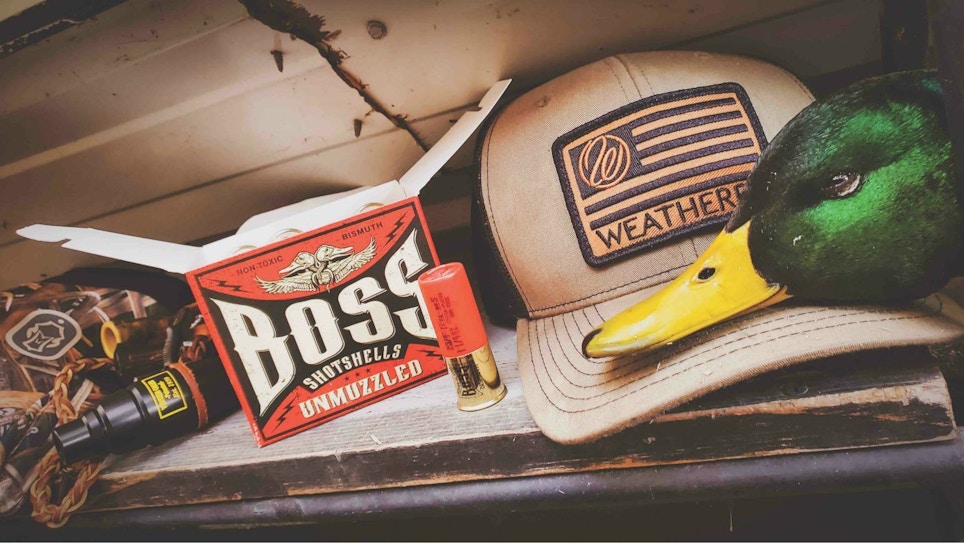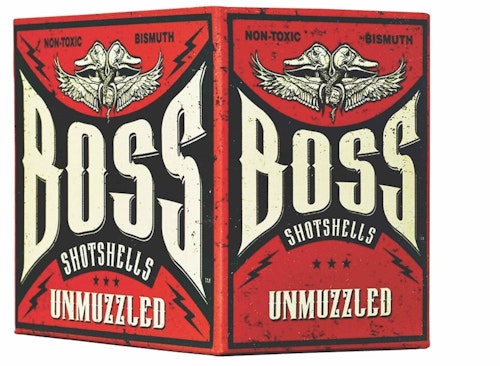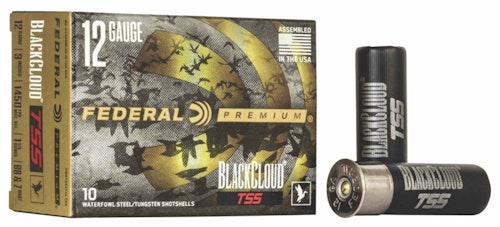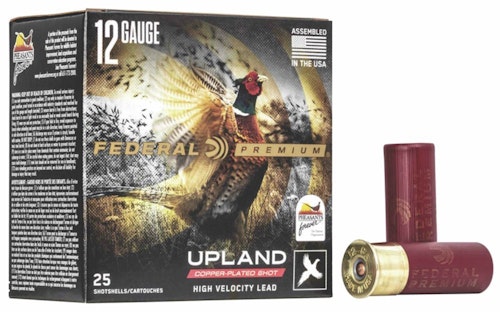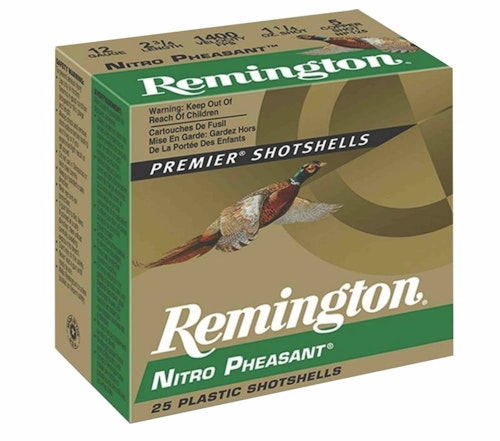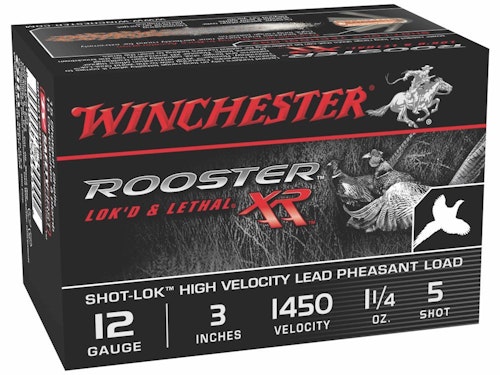“10 o’clock, coming in low.” While one remained on lookout, the rest of us lay in wait, motionless and tucked as much as possible into the darkened, flooded timber. “Get ’em, boys!” With the command issued, we cut loose on a handful of ducks dropping through the flooded timber and attempting to land in our decoys. Every person in our hunting party sent three shells into the air, dropping a mixed bag of a half-dozen hen and drake mallards. That is, nearly every person. I managed to connect with a duck on the first shot — but my shotgun jammed before I could send up another. Unfortunately, my problem wasn’t an isolated event. Every time we received the command, I shot once, stove-piped upon ejection, manually cleared it and tried to shoot again, but the chamber was empty — the next shell had failed to feed.
While it would seem easy to blame the ammo, or worse, the shotgun, the problem often is a bit of both, perhaps a lighter load and shotgun in need of cleaning. As reliable cycling relates to target shooting or dove hunting, I’ve found some shotguns most certainly do have trouble cycling lighter, slower loads, lending some truth to countless claims that “my shotgun doesn’t like ______ ammo.” Of course, it seems the only way to know for sure is to spend time in the field with various shotguns and a laundry list of shells, but let’s be honest, it’s not a practical solution for most.
At the end of the day, however, good rules of thumb include offering a wide variety of shells, carefully considering when to carry light or low-recoil shells and when to recommend them — autoloaders might not be a great fit for light loads, but they may work perfectly in break-action or pump platforms. Garnering an understanding of reliability trends, like problematic light loads in semi-autos, not only helps you make better recommendations to your hunting and shooting customers, but it can also help you determine your shotgun ammo inventory. With that in mind, here are 10 upland and waterfowl loads sure to appease the lion’s share of your hunting customers.
Apex Ammunition WS TSS/S3 Waterfowl
Apex Ammunition has risen to the top of premium shotshell ranks as a result of tungsten shot research and development; in fact, their latest tungsten .410 ammo delivers impressive patterning out past 40 yards. Apex’s commitment to producing premium waterfowl loads is equally impressive and best represented, considering innovation and affordability, in the company’s 12-gauge, 1 1⁄4-ounce, 1,400-fps Waterfowl Tungsten/S3 Steel Blend ammo.
While steel rules the waterways, Apex’s use of tungsten increases energy and range. Apex Waterfowl shot sizes include BB, No. 2 and No. 4. Duck hunters may flock to Apex’s No. 4 most often for ducks ranging from teal to full-size mallards; however, if they’re after large ducks and geese, they may opt for No. 2s.
BOSS Shotshells Bismuth Unmuzzled
Not long ago, I spent some quality time with Weatherby’s insanely reliable, fast shooting, recoil-friendly 18i 12-gauge shotgun. To date, it’s one of the finest shotguns I’ve handled, and coupled with BOSS Shot Shells, it was a nightmare for mallards on the North Loup River when I hunted with Weatherby and Stutzman Outdoors in Burwell, Nebraska. For a guy like me that averages at least a full box of shells for a limit of five ducks, my average of one or two shots per duck was impressive (at least to me), and often it took a single BOSS Shotshell to fold wings — after the first day, I was sold on them and Weatherby’s new 18i.
BOSS waterfowling shot shells are available in 2 3/4-inch to 3-inch sizes, with 1-ounce to 1 1/2-ounce payloads, for .410, 28-gauge, 20-gauge, 16-gauge and 12-gauge shotguns, in shot Nos. 7 to 2. For smaller ducks, No. 7 may work, but your average waterfowlers are most likely to be after No. 4 or No. 2 shot. Across BOSS Shot Shells’ waterfowl lineup, velocity is consistently reported at 1,350 fps, and all ammo boasts copper-plated bismuth for increased density and improved patterns.
Browning Wicked Wing
Browning has built a legacy upon quality and customer service. Their “best there is” tagline means there’s quite a reputation to live up to, and Browning does a remarkable job defending the claim — their shotgun ammo is no different. Capitalizing on the ultra-popular BXD (extra distance) waterfowl ammo, in 2019, Browning unveiled the company’s Wicked Wing ammo. Wicked Wing ammo features corrosion-resistant steel shot and Browning’s wicked-stable BXD wad. The result is tighter, better controlled patterns over longer distances. Currently, Browning Wicked Wing ammunition is only available in 3-inch shells for 12-gauge shotguns, with 1 1/4-ounce weights. Available shot sizes are No. 4 and No. 2, and average muzzle velocity for both offerings are reportedly 1,450 fps.
I’ve used Browning BXD ammo for ducks and dove in my personal Benelli Super Black Eagle III, and while I have put quite a hefty number of breasts on the grill, I have yet to experience a misfeed. That said, I’m looking forward to time in the marsh with Browning’s Wicked Wing ammo, and the line is sure to appeal to your customers, too.
Federal Black Cloud TSS
The benefits of tungsten shot to reach further and hit harder have been widely known for a few years now, especially among turkey hunters; however, the technology’s bleed-over into waterfowling is fairly new. Even so, someone must have leaked it, because a number of shotshell producers have simultaneously moved in the tungsten direction. Fortunately for Federal, few have mastered it, and the addition of tungsten to the company’s Black Cloud line is a big win. Black Cloud already ranked among the most trusted waterfowl ammo in the industry anyway, so the addition of tungsten to the product line was destined to resonate with demanding duck hunters.
Federal’s Black Cloud TSS (Tungsten Super Shot) is currently only available in 3-inch shells for 12-gauge and 20-gauge shotguns. 12-gauge shells feature a 1 1/4-ounce payload, 1450-fps velocity and a mix of 40% No. 3 or BB steel and 60% No. 7 TSS pellets. 20-gauge shells feature a mix of No. 9 TSS and No. 3 steel pellets.
Federal Premium Upland
It’s easy to get lost in the long list of Federal Premium upland bird hunting options. A quick premium upland ammo search on Federal Ammunition’s website reveals no less than 36 shotshell products, including Wing-Shot High Velocity, Wing-Shot Magnum and High Velocity Pheasants Forever. Federal’s Upland Premium features range from 2 3⁄4- to 3-inch shells; charges ranging from 3/4- to 1 5⁄8-ounce and shot sizes of 4, 5, 6, 7 1/2 and 8 for 28-, 20-, 16- and 12-gauge shotguns.
With a roundup chock full of 12-gauge options, it’s worth digging into a shotgun option with a tad more less recoil, perfect for smaller-framed shooters or simply a more comfortable shooting experience without sacrificing the ability to pluck upland birds of all sizes from the air. Sitting at the top of Federal Premium’s popular 20-gauge offerings, you’ll find Wing-Shok Magnum. 20-gauge Wing-Shok Magnum shells boast copper-plated lead shot, brass-plated heads, buffered shot for tight patterning, shot charges of 1 1⁄8- to 1 1/4-ounce, 2 3/4- to 3-inch shells and shot sizes of 4 and 6.
Hevi-Shot Hevi-Metal Pheasant
Countless turkey hunters count Hevi-Shot as the premier load for longer range shooting and quick kills, and that reputation for top-shelf performance has certainly bled over into upland hunting in more recent years. Why? The answer is simple: Hevi-Shot was the first load to outperform both lead and steel, and it has been proven to be non-toxic even in soil with exceedingly high concentrations of shot. The pellets themselves are misshapen but are stronger than steel and denser than lead, and they allow for more pellets in the shell. Hevi-Shots results are undebatable — tighter patterns, longer reach and heavier hits. Indeed, for two decades, Hevi-Shot has changed the face of turkey hunting, and the same benefits continue to result in more upland breasts on the grill, too. And, if the sincerest form of flattery is imitation, proof lies in the rush to bring heavier pellet innovation to the shotgunning market after Hevi-Shot’s game-changing reputation began to take shape.
Designed specifically for upland bird hunting with 12- and 20-gauge shotguns, Hevi-Shot Hevi-Metal Pheasant ammo combines Hevi-Shot’s Pattern-Density Technology with innovative pellet layering, first with steel shot and then layered with the company’s proprietary denser-than-lead Hevi-Shot pellets. While Hevi-Shot’s Hevi-Metal Pheasant ammo is encased in 2 3/4-inch shells, 20-gauge shells feature a charge weight of 7⁄8-ounce and produce muzzle velocity of 1,300 fps. Hevi-Shot’s more popular 12-gauge loads boast a 1 1⁄8-ounce payload and blazing velocity of 1,500 fps. Both 12- and 20-gauge offerings are available in shot sizes of 4 and 5. While Hevi-Shot is commonly a bit pricier, your Hevi-Shot turkey hunting customers are sure to flock to your door for similar upland bird harvesting results.
Kent Bismuth Upland
Denser than steel and on par with lead, Kent Bismuth Upland ammo is a perfect solution for quail, pheasant and other upland bird species. Even better, if your hunting customers are environmentally conscious, they’re sure to love features like Kent’s clean-burning design and biodegradable wad. Bismuth ammo is also safe to shoot through vintage shotguns as well as through any choke system, and it offers enhanced performance in windy conditions.
Kent Bismuth Upland shot shells are available in 2 3/4-inch up to 3-inch lengths with 7⁄8-ounce loads up to 1 1/2-ounce, and in No. 5 or No. 6 shot size. Muzzle velocity is reported to be between 1,200 and 1,400 fps. Bottom line: This is an ideal option for customers looking for clean-burning ammo that won’t harm their prized shotguns or expensive chokes.
Remington Nitro Pheasant
Remington has stacked scores of ultra-reliable ammunition options for all manner of firearms for decades upon decades. While the company's Core-Lok bullets have been a favorite ammo choice for countless big game hunters the world over, their shotgunning ammo, whether for target shooting or hunting, has never slouched, either, and the company has continued to produce, innovate and produce again to remain ranked among the world’s most trusted and widely used ammunitions — or rather, munitions, considering over 200 years of world-renowned firearm manufacturing, nearly 60 years of producing the most trusted, widely used, battle-proven action in the world, the Remington 700. Let’s be honest: Remington definitely knows firearms, actions and ammunition, including upland game bird shells — case in point, the Remington Nitro Pheasant ammo.
Remington Nitro Pheasant ammo combines the company’s proprietary Copper-Lokt Technology (copper-plated lead shot) with a high concentration of antimony to produce the hardest lead shot I know of. The harder pellets eliminate deforming, producing tighter grouping and harder-hitting, deeper-penetrating results even at longer distances — a central theme to this roundup and certainly a welcome feature for any serious upland bird hunter.
Remington Nitro is available for 12- and 20-gauge shotguns. 20-gauge ammo is available in 1-ounce (2 3/4-inch shell) and 1 1/4-ounce (3-inch shell) charges, velocities of 1,300 fps and 1,185 fps respectively, and shot sizes of 4, 5 and 6. 12-gauge options include 2 3/4-inch shells with 1 3⁄8-ounce or 1 1/4-ounce loads, velocities of 1,300 and 1,400 fps, and pellet sizes of 4, 5 or 6. Pheasant Nitro 12-gauge shells also are available in 3-inch shells with 1 5⁄8-ounce charges, shot sizes of 4 or 5 and velocity of 1,350 fps.
Rio Royal Eco BlueSteel Waterfowl
As hunters, we are stewards of our great outdoors, thus have a responsibility to leave wild places as well off as when we tread upon them — enter Rio Ammunition. While steel shot is quite a beneficial eco-friendly move in that direction, Rio has painstakingly committed to helping waterfowlers take an unprecedented step in virtually erasing our presence out there with Royal Eco BlueSteel Waterfowl ammo.
Rio’s 12-gauge, 1,450-fps, 1 1⁄8-ounce, 3-inch Royal Eco BlueSteel shells are available in Nos. 2, 3, 4, 5, 6 and BB and feature hydrosoluble wads. Considering Rio’s use of steel shot and 100% biodegradable wads that effectively turn into compost, this ammo may be better than impact-free — to some extent it may actually be beneficial.
Winchester Rooster XR Lok’d & Lethal
While Rooster XR Lok’d & Lethal isn’t necessarily new, it’s still a top upland bird offering from Winchester’s elite ammo line, and deservedly so. Winchester poured significant research and development into XR ammo, resulting in Shot-Lok technology. Shot-Lok uses resin to eliminate any voids around shot pellets, virtually eliminating pellet deformation, tightening shot pattern at longer distances and ultimately, dishing out the bird-busting power your customers want.
Winchester XR Lok’d and Lethal ammo is available for 12-gauge shotguns in 2 3⁄4-inch shells with 1,300 fps velocity and 3-inch shells with up to 1,450 fps velocity. Rooster XR loads are quite respectable at 1 1/4 to 1 1/2 ounce, and available shot sizes are 4, 5 and 6 — ideal for pheasants, quail and other upland game birds.
